
インターネットで宝石を購入する方法
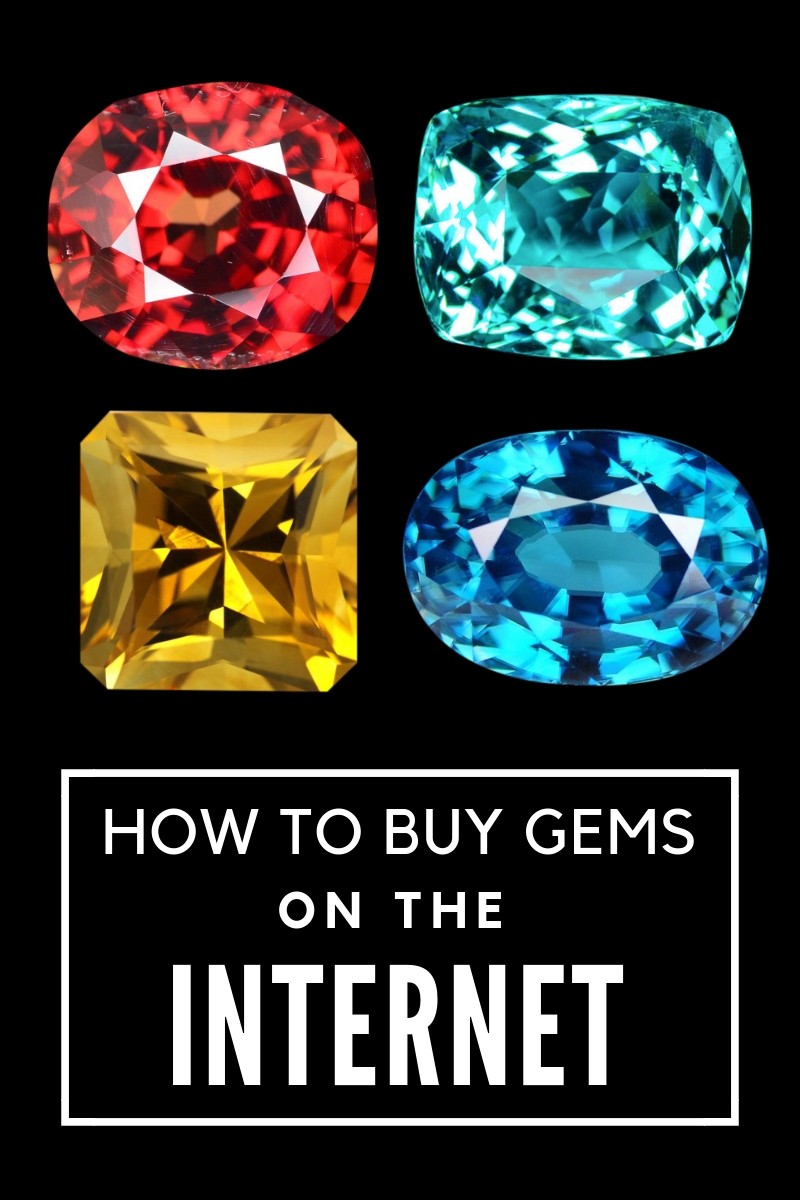 Gem Rock Auctions は、購入者があらゆる貴石や半貴石について十分な情報を得た上で購入できるよう、できる限り多くの情報を提供することを信条としています。
Gem Rock Auctions は、購入者があらゆる貴石や半貴石について十分な情報を得た上で購入できるよう、できる限り多くの情報を提供することを信条としています。
当社はオンラインで最大の認定宝石の品揃えを提供することを目指しており、重要な点として、当社の販売者は専門知識を持ち、業界団体の会員であることを確認する必要があります。
また、認定宝石鑑定士が指導する宝石諮問委員会と宝石鑑定士を擁していることも、当社の特徴です。このようなカスタマーサポートを提供しているオンラインサイトは他にありません。

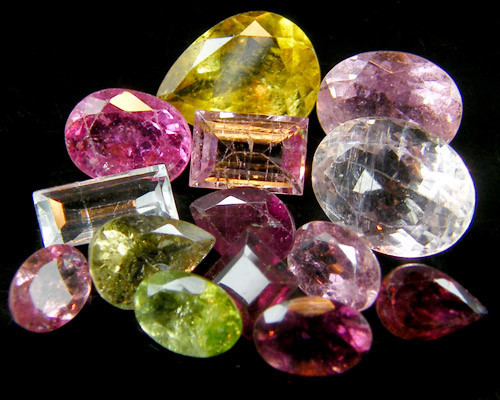

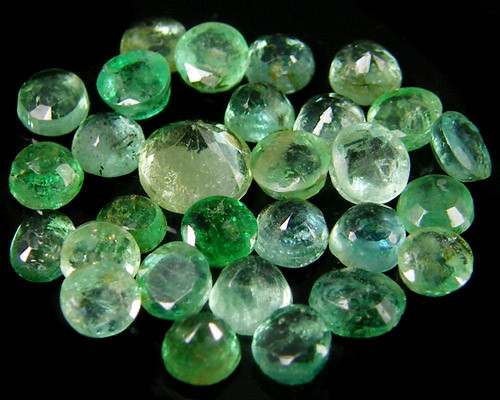
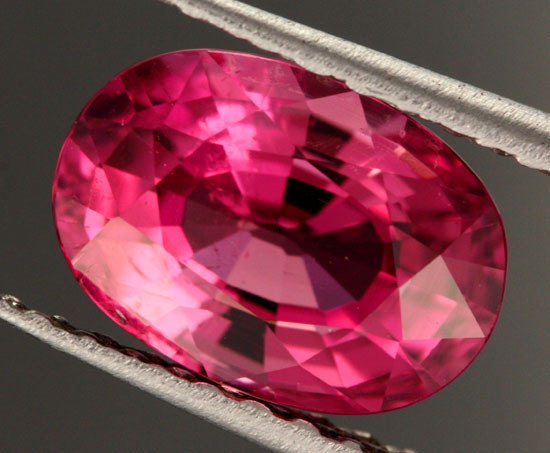

こんにちは。私の名前はジョディです。過去 4 年間で 80,000 ~ 120,000 枚の宝石の写真を撮影しました。
編集が多すぎるとオンラインの購入者を騙してしまうと思うので、できるだけ編集を少なくして、宝石の写真をより自然に見えるように努めています。
宝石は美しく、耐久性があり、希少であるため貴重です。
それが、彼らが写真に撮られる理由であり、私自身がこれらの美しい標本の写真を撮ることを楽しんできた理由です。

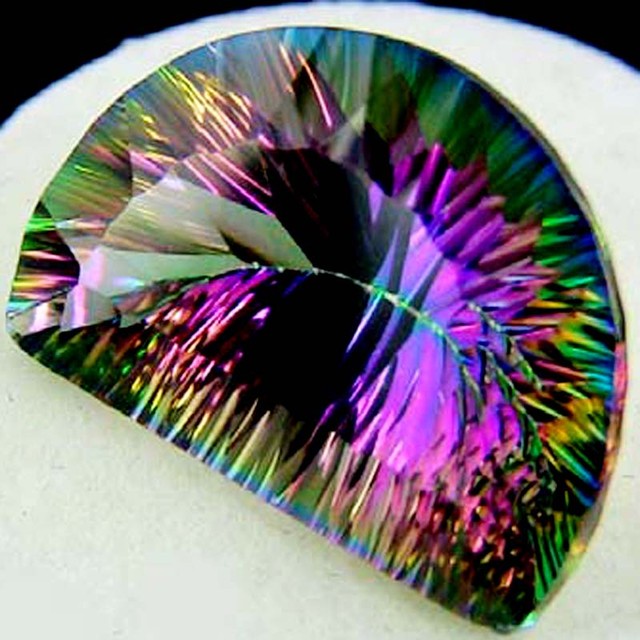
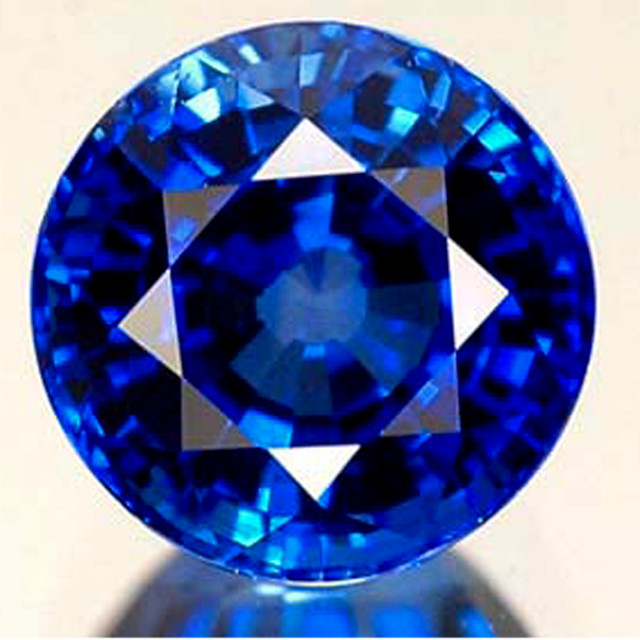
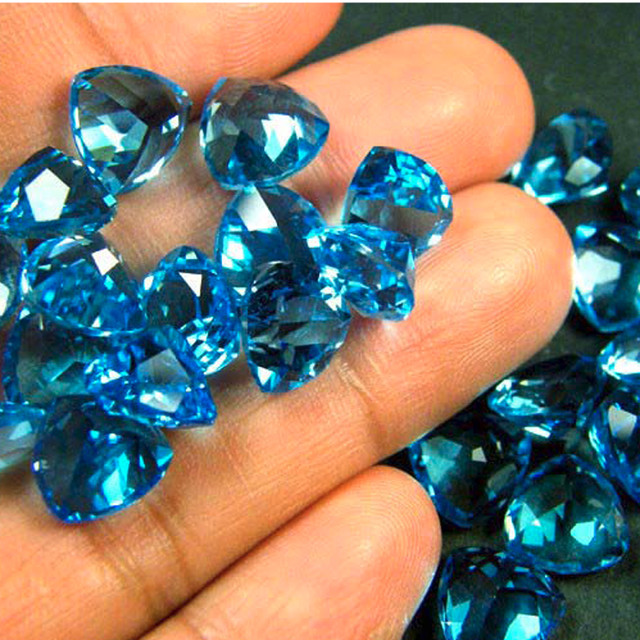
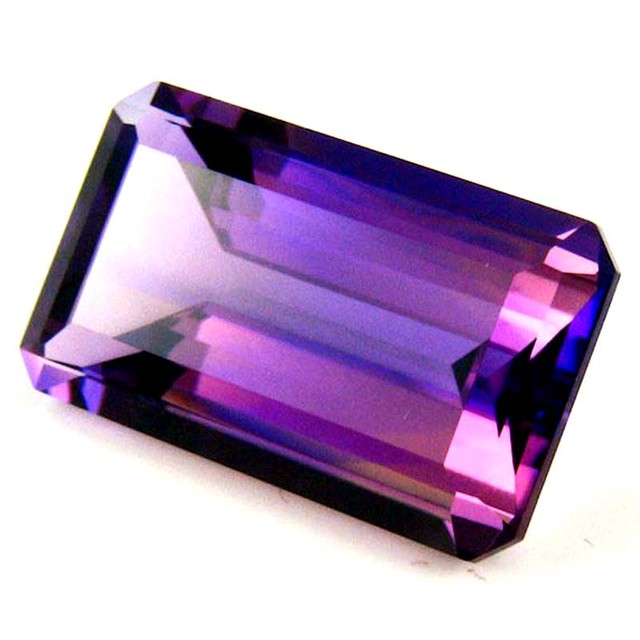

オンラインで購入する人にとって、写真は、宝石の本質を余すところなく正確に描写し、また、写真が生き生きとした輝きと深みを帯びることで、審美的な価値も兼ね備えた、質の高い科学的描写という重要かつ価値ある役割を果たしていると考えています。私のような宝石写真家は、自身の能力やスキルに合わせて習得し、カスタマイズできる多くのテクニックやプロセスを用いています。宝石の種類、照明、カメラ、背景、機材といった要素が、自然で美しい宝石を生み出す上で重要な役割を果たします。宝石写真撮影に関する私の見解をぜひお読みください。

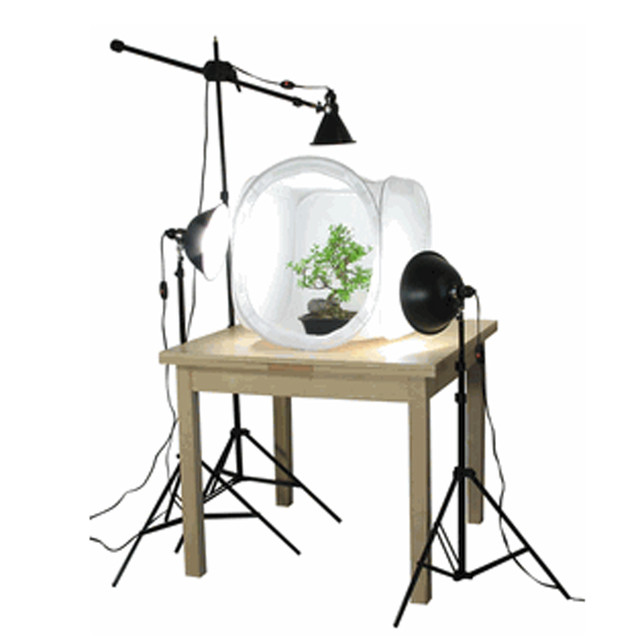


オンラインで購入する人は、石の外観をほんの少し変える要因がたくさんあること、たとえ些細なことであっても、注意する必要があると思います。
個人的には、オンラインで最もお得な商品の中には、アマチュア写真家が撮影した低品質の写真が使われているものもあると考えています。写真がプロ並みではないとしても、宝石そのものは見た目よりも質が良いのです。また、写真撮影の経験から、内包物が写真では拡大されて写っているため、宝石は実際には目にはきれいなのに、本来の姿とはかけ離れているように見えることも分かっています。購入者が質の高い販売者を見分ける良い方法は、フィードバックの評価とコメントです。販売者が販売するすべての商品には購入者からのフィードバックが必要です。フィードバックから、販売者がどれだけの販売数を達成したか、商品に関するコメントなどを知ることができます。これにより、販売者が素晴らしい写真を投稿しているにもかかわらず、フィードバックの総数が少なく、購入者数も少ないかどうかを個人的に調べることができます。これは、販売者による天然石の品質が低いことを示唆している可能性があります。個人的には、画像とフィードバックは関連していると考えています。つまり、販売者からのフィードバックにリピーターがいるかどうかを見ることで、石の真の品質を知ることができるのです。
照明源と照明技術
照明には主に次の 2 つのカテゴリがあります。
1. 自然光と
2. 人工光
どちらも色温度の異なる光を生成します。私の場合、石の周りの光を最大限に取り込むためにデスクランプに蛍光灯を 2 つ使用していますが、写真に厳しい明るさをもたらす可能性があるため、石の周りにライトテントを使用して光を拡散させることもできます。自然な見た目の石を作成するには、写真のすべての要素とのバランスが重要です。日光は無料であるため、最も安価な照明源です。ただし、いくつか欠点もあり、日が進むにつれて照明の色温度も変化します。日光の色温度は天候状況に左右され、曇りか晴れかによって、日光を使用して一定の正確な色再現を維持するのは困難です。また、直射日光を使用すると深い影と高コントラストが作成されるため、厳しい結果になります。
人工照明は、一定かつ正確な色温度の表現を可能にする最も一般的な光源となっています。人工照明には、白熱灯と蛍光灯の2種類があります。最もよく使われる白熱灯は、デスクランプなどによく使われるタングステン電球です。写真撮影で最もよく使われる蛍光灯は、蛍光灯とLEDライトです。
 写真: 正午の直射日光の下にあるエメラルド石
写真: 正午の直射日光の下にあるエメラルド石
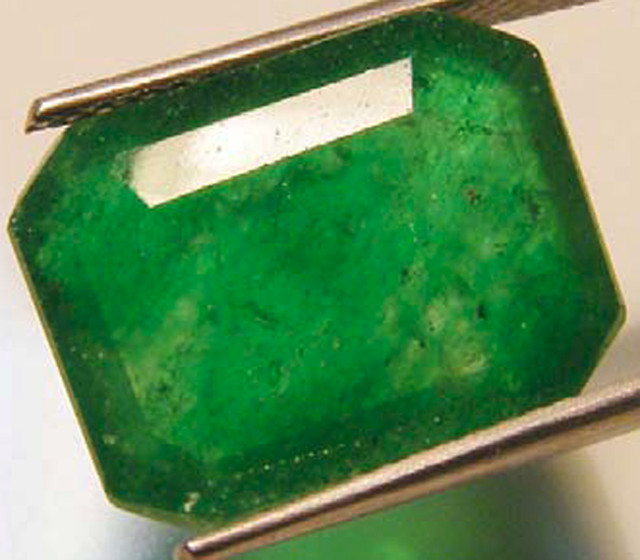
写真: タングステンライトの下のエメラルド石
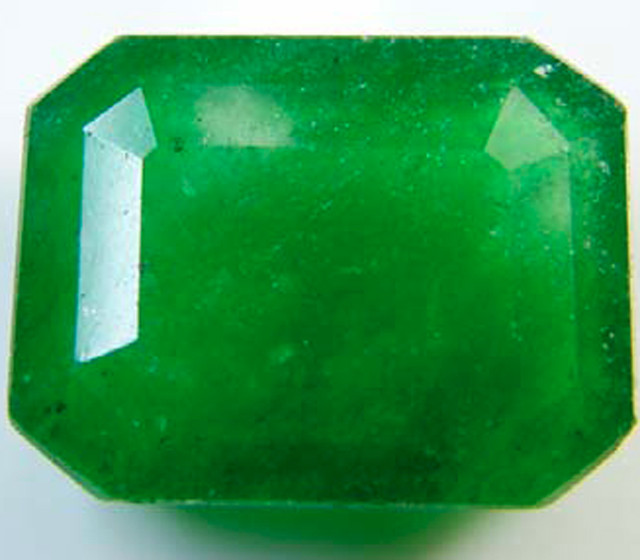
写真: LEDライトの下のエメラルド石

カメラのフラッシュを使うこともできます。このタイプのフラッシュは、設定によって変化する強烈な光を高速で発射します。しかし、下の写真のように設定が強すぎると、石の形や色がぼやけてしまいます。まさにこの理由から、私は個人的にフラッシュは使いません。
フラッシュありとなしのアメジストの比較写真:
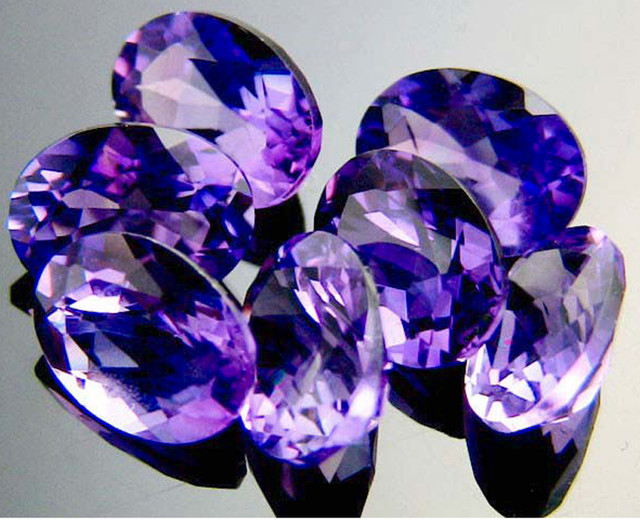
写真: フラッシュなしのアメジスト
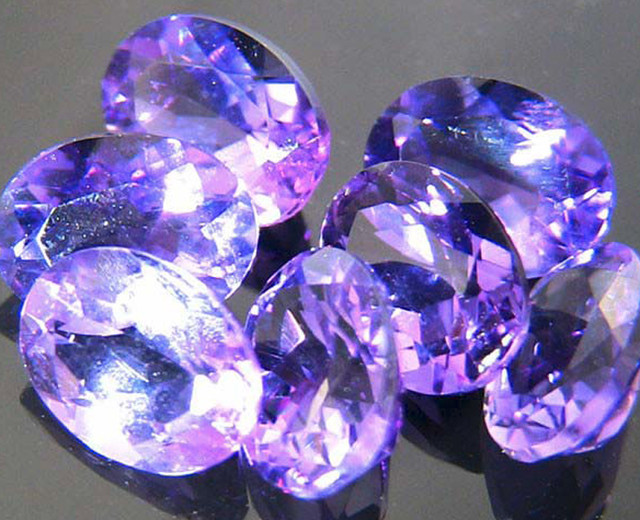
写真: フラッシュを当てたアメジスト
照明技術:
宝石を正確に表現するには、照明のバランスが重要だと個人的に考えています。角度と位置によって、宝石のコントロールと強調が決まるからです。照明に関する重要な要素は次のとおりです。a) 表面からの反射光 b) 宝石の内部構造または「地色」からの反射光 c) 宝石の裏側から差し込む光
A) 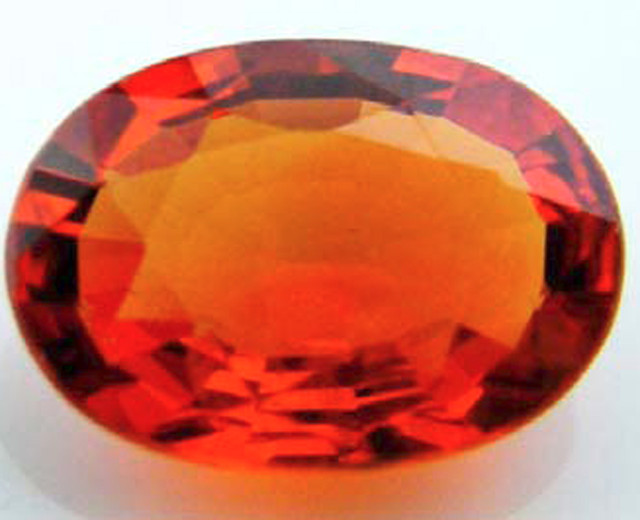 B)
B) 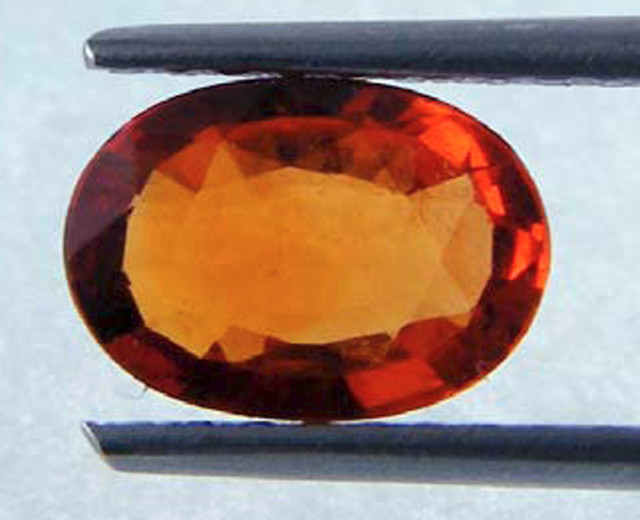 C)
C) 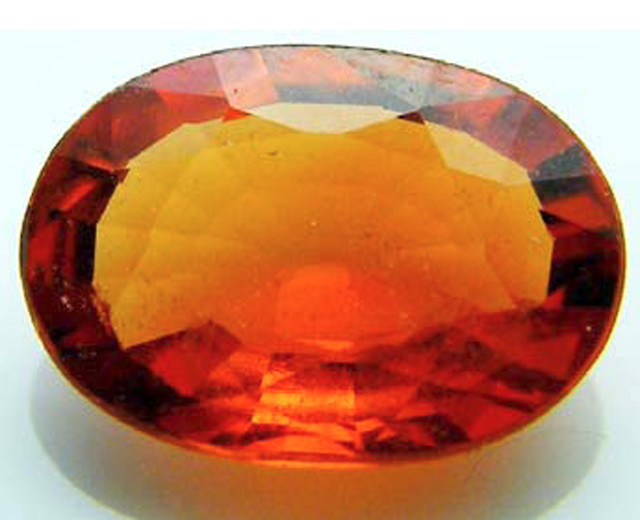
図a、b、cの説明:
a) 表面に反射した光が宝石の色やファセットを鮮明に映し出し、全体的に宝石の印象を良くしています。この写真はトリミングしてあります。
b) 宝石の底部から内部から光が漏れている。この宝石の場合、本来の美しさを誇示するものではない。
c) 宝石の裏側から光が輝いています。光の角度によっては、正面から見た場合のようにファセットを通して光があまり反射しません。
個人的には、石に当てる光の量を調整します。光が多すぎると写真が台無しになってしまうことがあるからです。また、石の美しい色、形、そしてファセットを際立たせる効果が得られるまで、光の角度も調整します。
背景技術:
宝石の背景は、焦点を宝石から引き離さないように、無地でシンプルにする必要があります。黒、白のアクリル背景、小さな鏡、または手を使うこともできる 4 つの異なる背景をお勧めします。宝石によっては、石の色のために特定の背景が引き立つ場合があることを理解することが重要です。私は、プロフェッショナルな反射を作成し、クリーンで雑然としない背景を作成するため、黒と白のアクリル背景をよく使用します。4 つの背景オプションをすべて試して、どれが石に最も適しているかを確認することをお勧めします。以下は、4 つすべての背景に宝石を置いた例です。結果は編集されていませんが、トリミングされており、ご覧のとおり、それぞれの背景が石に異なる効果を生み出します。販売者として、石を最も自然な状態で見せるために、最も正確な写真を選択する必要があります。
白い背景にゴールデントパーズ


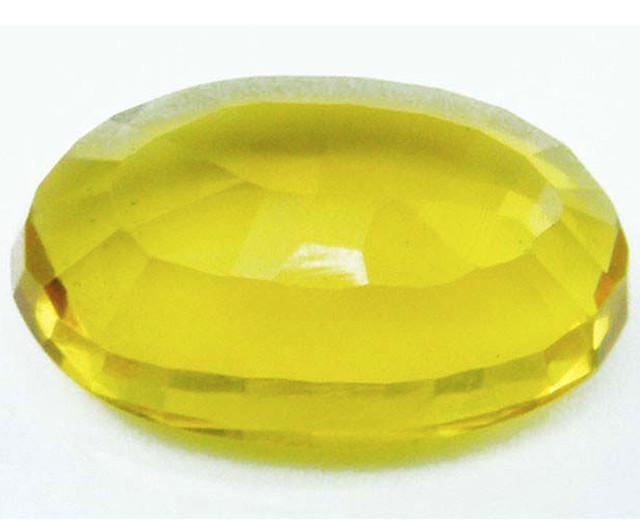
黒い背景に金色のトパーズ
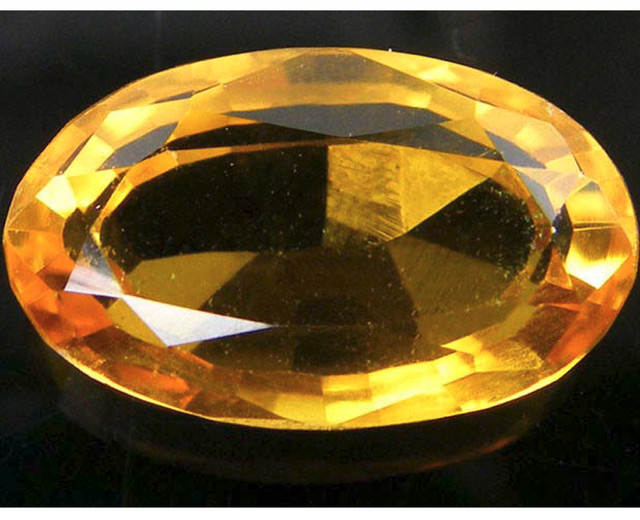
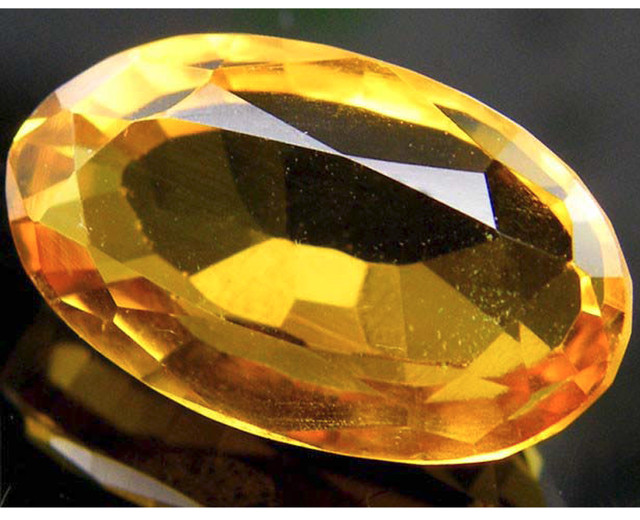

手の上のゴールデントパーズ

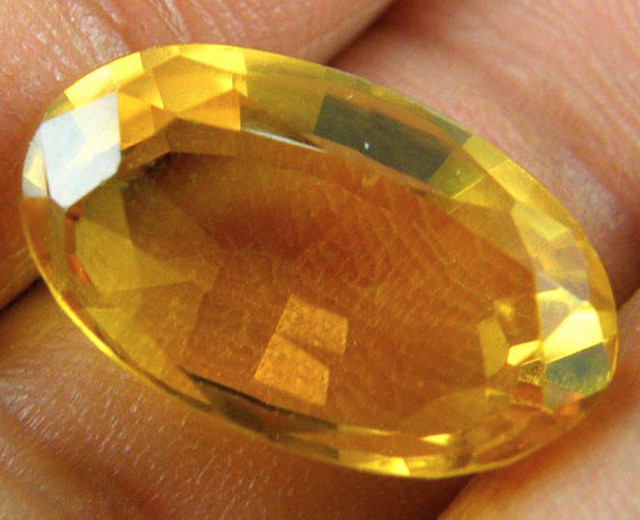

編集ソフトウェア:
市場には数多くの写真編集ソフトウェアがありますが、ついやり過ぎてしまうことがあります。Adobe Photoshop の場合、ほとんどのソフトウェアは 299 ドルから 800 ドルと非常に高価であることを覚えておいてください。私は Adobe Photoshop 6.0 を使用しています。これは最も古いバージョンの一つです。しかし、ソフトウェアがどれだけ高性能であっても、編集をあまり行う必要はありません。写真をトリミングして保存するだけで十分です。石はできる限り自然な状態で見せるようにしてください。過度な色編集やその他の編集は、非常に誤解を招く可能性があります。色編集は、石を実際よりも暗くしたり明るくしたりできるため、真実味を欠く可能性があり、石の価値を高める可能性があります。また、編集によって石の実際の状態が隠れてしまうこともあります。私が言いたいのは、市場にはガラスを充填した石やその他の強化された石がたくさん出回っており、これに過度な編集を加えると、これらの石は信じられないほど良さそうに見えてしまうということです。
たとえば、以下のルビーの最初の 3 枚の写真では、編集はほとんど行われていません (まったく行われていない場合もあります)。
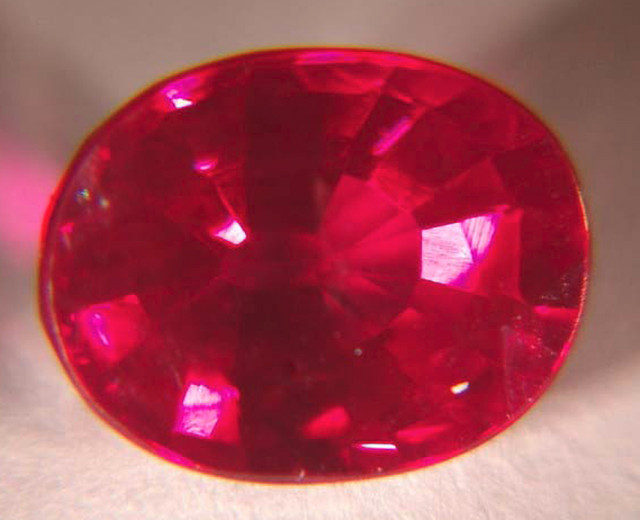
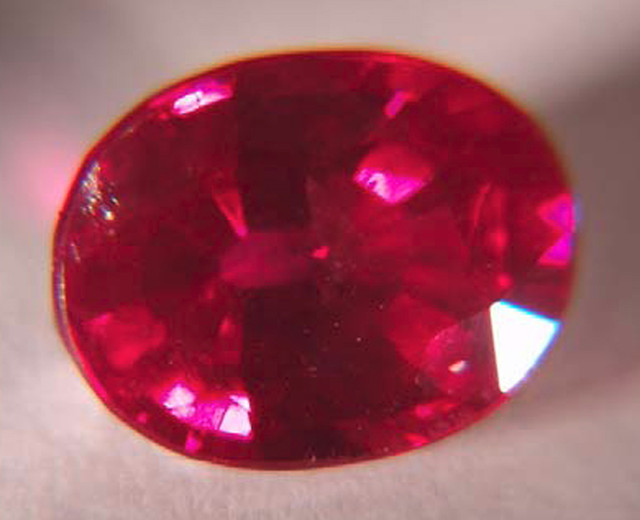
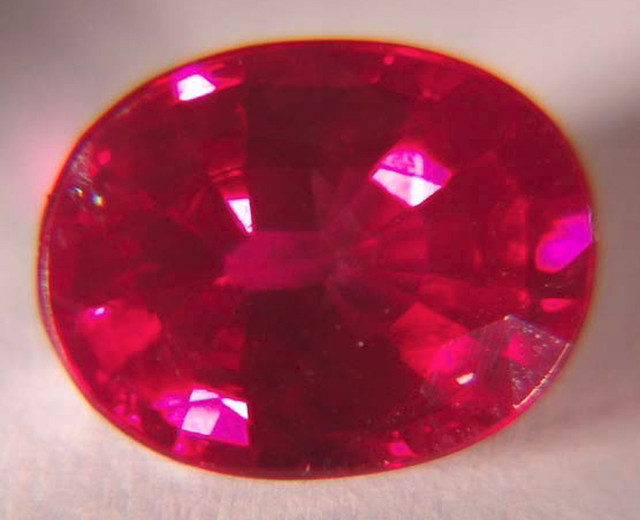
しかし、以下に示すプロが編集した 2 枚の写真ではまったく同じ石ですが、石はほとんど同じに見えません。


普段は1日に約100枚の写真を撮り、編集して出品できます。1つの石につき2~3枚の写真を撮り、編集して出品するのに、実際には7~10分しかかからないはずです。ところが、中には信じられないほど非現実的な写真を掲載した非現実的なサイトもあり、1枚の写真を編集して加工するのに何時間もかかることもあります。写真のスキルがあまりないセラーもいるかもしれませんが、彼らの石は実際には加工しすぎた石よりも自然で品質が良く、価格もおそらくお買い得です!
カメラ:
もう一度言いますが、プロ仕様のカメラにお金をかけすぎるのは本当に危険です。私は個人的に、富士フイルム FinePix S8000fd 18倍光学ズームデジタルカメラを使っています。小売価格: 399ドル

宝石は小さく、安価な普通のカメラでは得られない鮮明な画像が求められるため、光学ズーム機能を備えた手頃な価格のカメラを購入することは、長期的に見て良い投資となるかもしれません。私のカメラは18倍光学ズームを搭載しており、ズームインしても高画質の写真が撮れます。ただし、購入前に下調べをする必要があるかもしれません。以下は、FinePix光学18倍ズームデジタルカメラとCoolpix光学3倍ズームデジタルカメラの比較です。
FinePixで撮影したペリドットの小包の宝石 Coolpixで撮影したペリドットの小包の宝石
18倍光学ズームデジタルカメラ 3倍光学ズームデジタルカメラ


ご覧の通り、光学ズームが大きいほど、写真がより鮮明になります。18倍光学ズームでは、石の輪郭がより鮮明に写りますが、3倍光学ズームではぼやけた部分が多くなります。
宝石:
宝石の品質は、写真撮影において間違いなく重要な役割を果たします。売り手にとって重要な点は、宝石を購入する際、写真の品質は宝石自体の品質と相まって初めて実現できるということです。宝石に内包物が多く、肉眼で内包物が見える場合、写真の品質に悪影響を与える可能性があります。写真を編集して内包物を隠すことは避けるべきです。購入者が商品を受け取り、実際の品質を目にした際に、紛争や返品につながる可能性があります。また、売り手としての信頼性や信頼性について、購入者から悪い評価を受けることにもつながります。
————————————————————————————————————————————————————
————————————————————————————————————————————————————
色、カット、透明度、重量
色、カット、クラリティ、そして重量は、宝石を購入する上で重要な要素です。この記事では、これらの概念とその他の点について解説します。宝石を購入する際、多くの場合、色は購入において大きな役割を果たします。色は、宝石の化学組成に加え、カット、形状、クラリティなど、様々な要素によって決まります。
色
通常、購入者が最初に注目するのは色です。しかし、色だけでは宝石の魅力は決まりません。クラリティ、カット、カラット重量なども重要な要素となります。オンラインでは宝石の写真しか見当たらないため、写真に添える適切な説明が、宝石を購入する最良の方法です。
まず、色は光と観察者の相互作用によって決まることを理解する必要があります。色相、トーン、彩度は、あなたが望む色を視覚的に捉えるために不可欠です。色相は基本色に対する第一印象、トーンは色の暗さ、彩度は色の強さまたは鮮やかさを表します。
宝石の色はどれも重要です。Gemrockでお選びいただいたストアからご注文いただく際は、宝石に関する知識がお役に立ちます。それぞれの宝石は独自の化学組成と構造を持ち、それが宝石の独特の色を生み出しています。例えば、ルビーとサファイアはどちらもコランダムという宝石の一種です。クロムという「成分」が加わることで、ルビーと呼ばれる赤色が生まれます。
しかし、鉄とチタンの存在はサファイアの青い色合いを生み出します。私たちが愛するすべての宝石は、それぞれの種や宝石の化学的性質の違いにより、色のバリエーションを持っています。色のバリエーション:多くのお客様は、購入する宝石全体が均一な色に広がっていることを期待しますが、多くの宝石は複数の色を帯びており、構造全体にわたって光の反射率が異なります。これらはすべて、宝石の化学組成によるものです。カラーゾーニング:宝石のカラーゾーニングには理由があります。鉱物の成長は決して平坦ではありません。成長条件は変化します。例えば、ウォーターメロントルマリンは片側がピンクで、もう片側が緑になることがあります。これは望ましいカラーゾーンです。
宝石の中には、望ましくないカラーゾーニングを持つものがあります。カッティング職人がカラーゾーニングを隠すことは可能ですが、必ずしも可能とは限りません。片側が無色のブルーサファイアが見られる場合もあり、宝石の外観を損なう可能性があります。カラーゾーニングやバイカラーの外観が見られる場合は、購入する宝石の種類を考慮してください。前述の通り、カラーゾーニングは宝石の価値を高める場合と高めない場合があります。
照明によって色が違って見える
なぜルビーはろうそくの光の中でこんなにも美しく見えるのでしょう?夕日に照らされた桟橋に立つ女性の青白い肌が、なぜ金色に輝くのでしょう?
答えはすべて、異なる光源が色に与える影響に関係しています。一般的に、宝石はそれぞれ特定の光源下では異なって見えます。緑、青、紫の宝石は、ほとんどのオフィスにある蛍光灯の下で最も美しく見えます。蛍光灯は一般的に青や緑を多く発するため、これらの宝石の色をより鮮やかに見せることができるからです。赤、オレンジ、黄色の宝石は、ろうそくの光、普通のランプ、夕日の太陽のような白熱灯の下で最も美しく見えます。白熱灯は主に赤、オレンジ、黄色の光波を発し、これらの宝石の色を強調します。
照明によって色の見え方が変わることを覚えておくと、オンラインで宝石を購入する際に役立ちます。また、パソコンの設定によって宝石の色が多少異なって見える場合があることも重要です。そのため、説明をよく読むか、販売者に色について尋ねてください。また、多くのカメラは紫外線フラッシュなどの照明を使用しているため、実際の宝石とは色が多少異なる場合があることにも留意してください。
そこで私はこう言いました。「質問は決して不当なものではありません。写真は千の言葉に匹敵しますが、質問はあなたの懸念に答えることができます。」すべての販売者が、大企業が使用する顕微鏡カメラやその他の高価な技術に時間と費用をかけられるわけではありません。また、「FINE COLOR(上質な色)」も考慮に入れることをお勧めします。これは、宝石業界が最も望ましいと考える色の範囲です。
最終的な選択によって、選ぶ色が決まります。業界が選ぶ色は、必ずしもあなたが選ぶ宝石の色と同じとは限りません。色の範囲とは、それぞれの宝石の色の範囲のことです。色は宝石の価値に大きな影響を与えます。濃い青/紫色の「AAA」カラーのタンザナイトは、淡いライラック色のタンザナイトよりもはるかに高い価値を持つ場合がほとんどです。他にも考慮すべき要素はありますが、色は重要な要素の一つです。
多色性とは、宝石が異なる方向から見ると異なる色を呈することです。ここでもタンザナイトを例に挙げると、最高級のタンザナイトは、ある角度からは紫や青に見え、別の角度からは紫に見えることがあります。トルマリンは、ある角度では濃い緑色に見えますが、別の角度から見るとはるかに明るい緑色に見えることがあります。
宝石の色を理解することで、最適な宝石を選ぶことができます。宝石の色は化学組成だけでなく、カットや透明度などの要素によっても決まります。
キーワード:
遊色現象、オパールやその他の宝石に見られる虹色のきらめき。
アバンチュールシーンとは、宝石内の小さな平らな内包物から光が反射して生じるキラキラとした効果です。
虹彩とは、光が物質層によってスペクトル色に分解されるときに作り出される虹色効果です。
ラブラドレッセンスは、ラブラドライト長石に見られる幅広い色の輝きで、宝石を動かすと消えてしまいます。
アステリズムとは、シャトヤンシーの帯が交差して、カボション宝石のドームの中に星を作り出すことです。
シャトヤンシーとは、多数の平行な針状の内包物や中空の管からの光の反射によって特定の宝石に生じる光の帯のことです。
ミルクとハニーは、シャトヤンシーの宝石を光源に対して直角に配置すると見える 2 トーン効果です。
アレキサンドライトに見られる色の変化は、様々な光の下で宝石の色が極めて特徴的に変化することです。これは非常に稀な現象です。
明瞭さ
透明な石の価値の大部分は、その透明度、つまりキズや内包物の有無です。キズとは、研磨された宝石の表面のみに現れる凹凸のことです。一方、内包物は宝石の内部に閉じ込められているか、内部から表面まで達しているものです。そのため、この違いを理解することが重要です。多くの宝石は、宝石内部のキズ、つまりインクルージョンによってグレード分けされます。カラーストーンには様々な種類のキズや内包物があり、宝石の外観や耐久性に様々な影響を与えます。
ブレミッシュとは、傷や欠けなどの表面の凹凸のことです。宝石の外観にはほとんど、あるいは全く影響を与えません。購入者は改めて、ブレミッシュが極めて大きく、または数が多い場合を除き、販売者はこの基準ではなく、インクルージョンのみに基づいて宝石のグレードを決定する場合があることを理解する必要があります。
一方、インクルージョンは宝石に様々な影響を与えます。内部特性には、割れ、液体の塊、異質な鉱物結晶などが含まれます。ブレミッシュとインクルージョンを合わせてクラリティ特性と呼びます。
宝石の形成過程上、真に内包物や傷のない宝石は極めて稀です。内包物が少ないほど希少価値が高まります。そしてご想像の通り、内包物が少ないほど価値が高まります。
宝石を購入する際は、以下の点を考慮してインクルージョンを考慮する必要があります。
サイズ: 大きな内包物は小さな内包物よりも影響力が大きくなります。
番号:一般的に、石に含まれる内包物が多いほどクラリティは低くなります。例外もあり、微細な内包物が多数あっても、その石種においてはクラリティの尺度では高い評価を受けることがあります。
位置: テーブル中央の内包物は、通常、ベゼルの下やガードル付近の内包物よりも目立ちます。
色とレリーフ:宝石のボディカラーに近い色の内包物は目立ちません。しかし、明るい色の石に赤い内包物があるなど、宝石のボディカラーと対照的な内包物は、より大きな印象を与えます。
内包物は見た目だけでなく、宝石の耐久性にも影響を与える可能性があります。多くの場合、耐久性に影響を与える内包物は価値に大きな影響を与えます。割れもこのカテゴリーに該当します。
通常、内包物のない色の宝石はごくわずかで、それらの宝石はアクアマリン、シトリン、クンツァイト、タンザナイト、トパーズです。対照的に、赤トルマリンとエメラルドには必ずある程度の内包物が存在します。
役に立つ内包物。いくつかの内包物は役に立つ場合があることを覚えておいてください。キャッツアイ宝石に見られる針状の内包物や、デマントイドガーネットに見られる馬の尾のような内包物は、その内包物が宝石の中心点であるほど価値が高まります。
インクルージョンは天然宝石と合成宝石を見分けるのに役立ちます。まるで指紋のように、それぞれの宝石には独自の特徴があり、インクルージョンはほとんどの宝石を識別する方法の一つです。
ご自身に問いかけるべきことは、宝石に内包物や破損がないか、そしてそれが宝石の耐久性に影響を与えるかどうかです。内包物によって宝石の価値が平均価格を下回ってしまう可能性はありますか?内包物は宝石の美しさを損なわせてしまうでしょうか?宝石の内包物を見る際には、これらすべてのことを考慮してください。
カット
研磨された石のカットについて話すとき、私たちは2つの組み合わせのいずれか、つまり形とスタイル、またはプロポーションと仕上げについて言及しています。宝石において、色の次に最初に注目するのは、形とスタイルです。形とは、石を表向きに見たときの輪郭のことです。ラウンドカットが最もよく知られています。その他のカットは、一般的にファンシーシェイプに分類されます。
エメラルド、クッションカット、オーバルカット、ペアシェイプ、マーキスカット、ハートカットなどがあります。スタイルとは、カット職人が石のファセットをどのように配置するかを指します。ほとんどの宝石は、3つのスタイルのいずれかでファセットカットされています。ブリリアントカットのファセット(上部)は、テーブルまたはキューレットからガードルまで放射状に広がります。ステップカットのファセット(中央)は、同心円状に並んでいます。
ミックスカット(下)は、ブリリアントカットのクラウンとステップベースを組み合わせたものです。これらの基本的なスタイルに加え、カッターはファセットを追加、削除、並べ替えることで、無数のバリエーションを作り出すことができます。宝石の中には、特定のカットに適した独特の形状とサイズを持つものがあります。例えば、エメラルドの原石は、エメラルドカットのような長方形のカットスタイルに適しています。1カラット以上のルビーやサファイアの原石は、通常、オーバルカットまたはクッションカットにカットされます。質の高いカットは、宝石の魅力を最大限に引き出すのに役立ちます。
カッターの目標は、原石の重量を保ちながら、最も魅力的な宝石を作り上げることです。カッターが重量を維持したい場合、すべての宝石を伝統的な方法でカットできるわけではありません。宝石に特別なセッティングを施すことで、芸術作品が生まれます。キャリブレーションカットとは、標準サイズの台座に適合する宝石のことです。宝石のサイズが標準サイズに少しでも合わない場合は、宝石職人に台座の調整を依頼する必要があります。ルビーのような高品質の宝石の多くは、カットによって重量が大幅に失われるため、通常、業界標準の寸法にはカットされません。
デザイナーカットとファンシーカットは、芸術的な宝石のカットで、通常は標準サイズの台座には収まりませんが、熟練した宝石職人であれば容易に台座にセットできます。ほとんどの場合、小さめの石は標準サイズにカットされ、大きな石は可能な限り左右対称にカットされ、重要な価値要素を強調します。
標準的なマウントは通常、あなたの夢の宝石を保持するように調整できることを忘れないでください。品質と価値のスケールの最上位にある不規則なサイズの宝石には、カスタム設定が必要になることが多くあります。
カラット重量
世界中の宝飾品業界では、メトリックカラット(略称:ct)が使用されています。1ポイントは0.01カラットに相当するため、お客様の宝石は7.96カラットになる場合があります。カラット重量は価値の要素ではありますが、品質や美しさを決定づける要素ではないことを覚えておくことが重要です。
1.00カラットの宝石は、10.00カラットの美しい宝石と同じくらい素晴らしい場合もあれば、それほど壮観ではない場合もあります。すべては個々の宝石とお客様の好みによって決まります。重量の表記について - 販売者は、カラット重量を1/4カラットや1/2カラットといった分数で表し、一般的な目安として範囲で説明することがよくあります。
しかし、卸売業者は 0.27カラットの宝石をクォーターカラットとして販売する場合もあります。販売者同士の日常会話では、クォーターカラットの石の重量は0.23~0.29カラット程度とされていますが、販売プレゼンテーションでは、1/4カラットや1/2カラットといった分数の使用には細心の注意が必要です。正確な重量、つまり0.01~0.02カラット以内の重量を把握する必要があります。多くの秤では、その程度の誤差が生じるからです。販売者が精度の高い秤を使用すれば、通常は0.01カラット以内、つまり正確な重量を記載できます。宝石の総重量を記載する際にも、正確さは非常に重要です。
これはお客様側の混乱を避けるためです。重量がわからない場合は、お気軽にお問い合わせください。通常、宝石を購入する際に信頼できるお気に入りの宝石販売業者が複数見つかるはずです。その場合は、提示された重量を信頼できるはずです。卸売業者は、石1個あたりまたはカラットあたりの価格の2通りで価格を提示する場合があります。
石の価格は、1石あたりの総額です。カラット価格は1カラットあたりの価格です。例えば、宝石が1カラットあたり50ドルで販売されている場合、3カラットの宝石を購入すると150ドルかかります。重量と価値 - 宝石の中には通常、4カラット未満のサイズのものもあります。宝石品質のルビー原石やアレキサンドライトなどは、通常4カラット未満のサイズの宝石の好例です。
アクアマリンやシトリン、アメジストやトパーズといった宝石は、100カラットにも及ぶ非常に大きな結晶で産出されます。このような宝石の場合、通常、カラット単価はサイズによってほとんど、あるいは全く上昇しません。4カラットのアメジストは通常、2カラットのアメジストの2倍の値段です。1カラットのルビーと3カラットのルビーの価格は、宝石の価値によって大きく異なります。重量とサイズ - 2つの宝石が同じサイズの場合もあります。例えば、同じサイズのアクアマリンとブルートパーズの場合、トパーズの重量はアクアマリンよりも重くなります。同じサイズで、1カラットのサファイアと1カラットのアイオライトの場合、寸法は異なります。そのため、石を台座から取り外す際は注意が必要です。
石の重さや大きさはそれぞれ異なります。宝石を選ぶ際には、色の範囲を考慮する必要があることがお分かりいただけたかと思います。宝石の透明度、カット、そして重量に注目してください。最終的には、ご自身でお選びいただくことになります。色の選択は個人の判断です。しかし、宝石の透明度は重要です。カットも重要です。選ぶ宝石は、美しいプロポーションとデザインを持つべきです。
カットの悪さは、宝石の窓や黒ずみから簡単に見分けられます。美しい輝きを持つ宝石は、どんな宝石愛好家の目も惹きつけます。最後に、信頼できる、そして以前から取引のある販売者を選ぶのが最善です。Gemrockでは、販売者はサイトの規則を遵守する必要があります。質問があれば、販売者に尋ねれば、掲載されている宝石に関するほぼすべての質問に答えてくれるはずです。
もし情報が足りないと感じたとしても、販売者が喜んで必要なサポートを提供してくれるはずです。ほとんどの販売者は、ご要望があれば宝石の台座の取り付けや特注宝石の注文にも対応してくれます。信頼できる認証済みの販売者は、まさにうってつけです!
カレン・デル・ガウディオ

ファセットカットの宝石を買う
Gemstone Encyclopedia検索
最新記事
レインボーラティスサンストーンは、様々な内包物によって3つのゴージャスな光学的効果を持つ長石の一種です。燃えるように鮮やかな色合いと格子模様が、コレクターにとって希少な宝石となっています。
12th Jan 2026
チューライトは、ゾイサイト鉱物ファミリーに属する、鮮やかなバラ色の色合いを示す希少なノルウェー産の宝石で、ジュエリーのセッティングやペンダントによく使用されます。
6th Jan 2026
記事のカテゴリ
How To's is where you will find helpful articles from gem Rock Auctions on how to cut gemstones, select gemstones and buy gemstones.
9記事数

